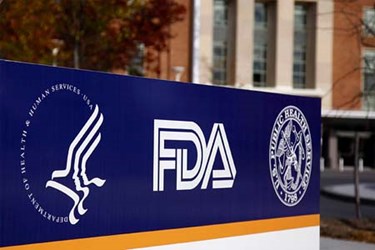FDA Is Called Upon To Improve Food-Facility Inspection Processes
By Laurel Maloy, contributing writer, Food Online

Though the Food Safety Modernization Act addresses pest-management programs, sanitary food processing, and microbiological testing, its inspection schedules and consequences for noncompliance leave much to be desired
The Food Safety Modernization Act (FSMA) is all but completely drafted. The dates are set for final implementation. And now, Senator Chuck Schumer (D-NY) is calling out the FDA.
He has made some valid points that are worthy of consideration, but where has Schumer been for the last three years? There have been numerous public meetings in which Schumer or his representatives could have brought these issues to light. Public comment periods have been advertised and the comments fairly considered. Additional public comment has been called for as the process has gone forward, with the additions and deletions to FSMA given fair and public consideration. Michael Taylor, the deputy commissioner for foods and veterinary medicine with the FDA, has appeared before congress and has asked for funding. FSMA has been a hot button topic for almost four years now, but we are just now hearing from Schumer? One might think an election year is looming.
To be fair, Schumer’s concerns are legitimate ones. He outlined a three-part plan, which, when combined with or added to FSMA’s implementation, would more-aggressively encourage compliance:
Inspection Frequency
Per FSMA, inspection frequency is determined based upon risk. Food facilities are ranked against a checklist of factors in order to provide a baseline assessment of the risk for food contamination. Those facilities considered to be “high risk” will be required to be inspected within five years of FSMA’s implementation, with one inspection every three years until its ranking changes. Those facilities considered “non-high-risk” will require an initial inspection within seven years of FSMA’s implementation, with an inspection at least once every five years thereafter. Schumer argues that any facility receiving an FDA warning letter should immediately be moved to the “high risk” list and that the frequency of inspections for these facilities should be increased.
Stiffer Penalties For Non-Compliance
Per FSMA and for the fiscal year (FY), the facility will only be charged a re-inspection fee. The estimate for FY2015 is $217 per hour, which is determined by figuring the personnel, travel, and per diem costs, as an average, for requiring the FDA to perform another inspection. There is no additional punitive cost for not complying with food-safety regulation. Schumer is most-likely correct when he says, “That’s not a heavy enough fine to encourage strict compliance with food-safety regulations.” In fact, to some companies, it may be simply justified as the “cost of doing business” and less expensive than a comprehensive pest-management program or ongoing-facility maintenance. Some may consider it the lesser of two evils.
A More User-Friendly, Searchable, List of Offenders
Schumer also feels that consumers and retail establishments need an easier way to vet the suppliers they are utilizing. It appears the FDA is currently working on this issue. The FDA’s Inspections Database page clearly states that some information may be withheld and should not be used to compile “official counts.” Downloading the Excel format report yields a spreadsheet with 63,356 lines. The report date is April of 2014 and includes all FDA inspections. The list is not alphabetized and is not broken down by foodstuffs, medical instruments, blood, cosmetics or drugs, all under the FDA’s purview. It does, however, preface the violation with the word food or foodborne to help wade through the thousands of facilities. Further clicking takes you to this page, where you can sort by the FDA District, Firm Name, City, State, Zip, Inspection Date, Project Area, Country/Area, and Classification. Data is available for inspections ending October 1, 2008 through March 31, 2014, which means it is not kept up-to-date and will not be of use if the facility has more-recent violations. This area definitely needs more work.
Yes, Schumer’s plan has its merits. What is not included in his plan is how these efforts will be funded. Under the CRomnibus spending bill, a temporary stopgap measure, The Food Safety and Inspection Service (FSIS), along with other elements of the FDA, will receive additional funding. The amount is not what the agency asked for, but is considered a triumph, nonetheless. Things are looking a bit brighter for the FDA, at least through this September, when Congress will again be required to put their priorities in order.
This is a bipartisan issue. Foodborne pathogens and rodents do not differentiate between Democrats and Republicans; germs and rats do not contribute to or re-elect government officials. However, one part of Schumer’s plan may ultimately help to fund the rest. Stiffer penalties for noncompliance will ensure a safer food supply, while the monies can go towards increasing inspections. This will require “tough love” on the part of the FDA, but may potentially fix a broken program. It will undoubtedly be well-received by the end-user, the American moms and dads feeding their families.
